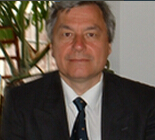Abstract—This paper describes a simulation architecture developed to address the need in the defence and aerospace industry for a rapid prototyping capability to test new and existing network protocols and systems where analytical methods no longer suffice. In particular, the simulator introduced here allows study of High Frequency (HF) radio networks and other unorthodox systems that cannot be easily modelled using existing communications network simulators. This paper describes the architecture and gives an example use case – modelling an HF System using the 2G Automatic Link Establishment (ALE) linking protocol under a variety of conditions; exploring the effects of changing the number of nodes in the network, and of altering the input data rate to the system. The network performance was analysed under a wide range of combinations of conditions, and it was found that increasing the number of nodes in these networks causes specific latency increases and an overall throughput decrease, both in the unidirectional and bidirectional case, although it is better tolerated in the unidirectional case. Increasing the input data rate causes an overall throughput increase up to a threshold point, after which it saturates and then decreases as data remains unsent, due to the physical limits of the system (including networking overhead) being surpassed. This simulator, known as CommNetSim has been developed for use in evaluating the technical capabilities of, and business cases for, real-world applications to be developed by Thales UK.
Index Terms—Communication networks, discrete event simulation, high frequency radio, modelling, simulation.
D. M. G. Tait is with the University of Bristol, Bristol, UK, BS8 1UB and Thales UK (e-mail: cexdt@bristol.ac.uk)
A. F. R. Gillespie is with Thales UK, Crawley, W. Sussex, UK, RH10 9TS (e-mail: afr.gillespie@uk.thalesgroup.com).
D. Cliff is with the University of Bristol, Bristol, UK, BS8 1UB (e-mail: dc@cs.bris.ac.uk).
[PDF]
Cite:Duncan M. G. Tait, Andrew F. R. Gillespie, and Dave Cliff, "A New Simulation Architecture for Communication Network Systems with Application to HF Radio," International Journal of Modeling and Optimization vol. 3, no. 4, pp. 324-328, 2013.


